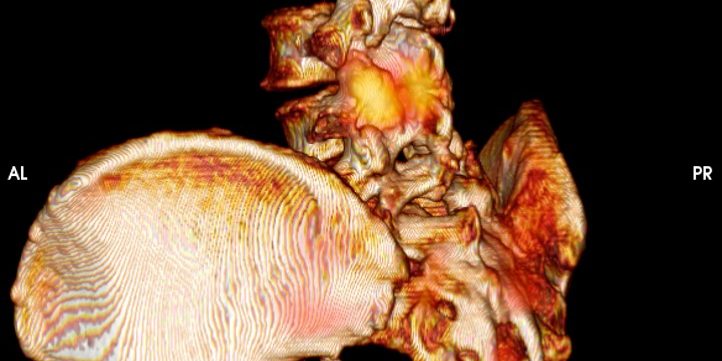The demand for SPECT-CT scans of the cervical and lumbar spine, has been growing over the last few years. Healthcare professionals specialising in treating mechanical back pain are realising that they can take some of the guesswork out of diagnosing inflammatory causes of back pain.
SPECT-CT is an extremely sensitive test for intervertebral disc, facet joint and sacro-iliac joint inflammation. MRI scans are often performed in patients with difficult to diagnose neck and low back pain. Whilst this can be beneficial if patients have symptoms of nerve compression, MRI is of little use in the diagnosis and management of mechanical back pain. Often MRI scans can show abnormalities in intervertebral discs and in facet joints which do not correlate with patients’ symptoms.
SPECT-CT scans, on the other hand, show good correlation with the site of patients’ symptoms in mechanical back pain.
The reason is that the scan can demonstrate the site of increased bone activity, which can be related to abnormal stress on the spine. It is this functional information which confers SPECT-CT greater accuracy than MRI in mechanical back pain.
SPECT-CT can differentiate facet joint arthritis from intervertebral joint arthritis. It can accurately identify which joint is affected, and can be used to direct steroid injections into the site of disease. Potentially this can reduce the need for multiple unnecessary procedures.

The improved anatomical imaging that SPECT-CT provides can identify problems associated with congenital normal variants, such as fused vertebrae which may result in a pseudoarthrosis.
SPECT-CT can also be beneficial in identifying subtle pars interarticularis defects / fractures (spondylosis) which can often be missed on MRI scans.
SPECT-CT is invaluable in assessing the post-operative spine. Because the presence of metalwork in the spine degrades the quality of the images in MRI scans, their role in evaluating the post-surgical spine is limited. SPECT-CT is not limited by the presence of metalwork, and can be extremely useful in assessing loosening of prosthesis and is very sensitive in identifying post-operative infection.

Finally, SPECT-CT can be used to identify discitis and osteomyelitis earlier than MRI scans. The increased bone activity which occurs because of localised inflammation is much more sensitive than MRI. This combined with the improved anatomical localisation of SPECT-CT compared to bone scans alone, results in earlier and more accurate diagnosis of infection in the spine.
SPECT-CT indications in the spine
o Determining sites of active facet joint arthropathy prior to joint injection
o Detecting pars interarticularis defects / fractures (spondylosis)
o Determining the level of active degenerative disc disease
o Differentiating acute from chronic collapse prior to vertebroplasty
o Assessment of the post surgical spine
o Assessment of potential metastatic disease
o Early detection of osteomyelitis and diskitis
o Detection of active arthropathy associated with pseudoarthrosis
o Characterisation of focal spinal lesions e.g osteoblastoma or haemangioma
#SPECTCT #backpain #nuclearmedicine #bonescan #arthritis






